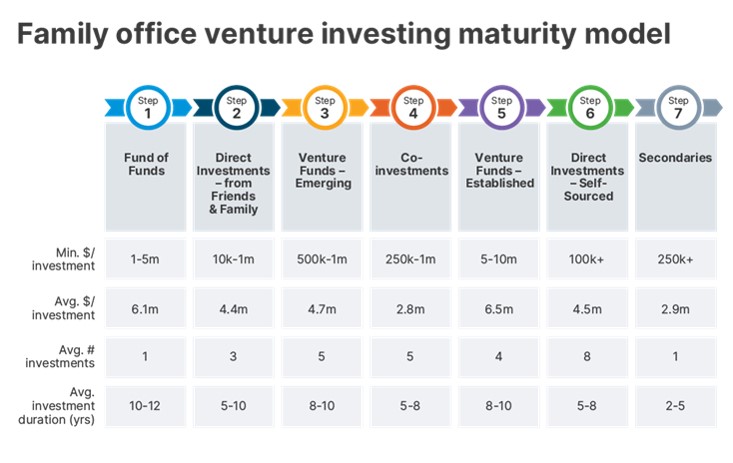Family Office
Raising The Family Office Game At Silicon Valley Bank

We talk to two senior figures at SVB about the work being done with family offices and venture capital.
With venture capital investment all the rage, and requiring the
kind of “patient capital” that family offices can provide, an
organization with feet in both camps is Silicon Valley
Bank. It is a firm with a sense of mission in family offices’
future.
Some 14 months ago, SVB bought Boston Private, deepening its
connections to the evolving family offices space as well as other
business lines. When it did so, one prominent individual who
became part of the SVB operation was Bill Woodson, head of
strategic wealth advisory and family enterprise services; he is
also the co-author of The Family Office: A Comprehensive
Guide for Advisers, Practitioners, and Students. (He is also
involved with the UHNW Institute, for which this news service is
the exclusive media partner.)
On the other side of the US, meanwhile, is California-based
Shailesh Sachdeva, managing director in the family office
practice at SVB. Between them, they bring a lot of insight into
what ultra-high net worth individuals, families and business
owners are looking for. Family Wealth Report recently
spoke to them.
Family offices are increasingly self-consciously joining forces
to speak to policymakers – such as in the Archegos affair,
where legislators called for tighter controls on what family
offices do. This speaks to a wider need to put over the case for
what family offices are and just as importantly, what they are
not, Woodson said.
Family offices and venture
The increased visibility of family offices and their involvement
in fields such as VC is where Sachdeva comes in. At SVB,
venture investment in the US almost doubled in 2021 with more
than $330 million being deployed, compared with $166 million
in 2020, he said.
SVB has created a “maturity model” to show FOs the different
stages of learning and experience in making VC investments. That
journey can take years, or months if FOs are active in the
venture ecosystem, he said.
“The innovation ecosystem is exploding,” he said, referring
to networks of VCs, other investment groups, family offices, etc.
“I don’t see a slowdown in new funds being formed. At the end of
Q4 2021, there were over 2,500 US funds actively raising
capital,” he said, citing SVB’s State of the Markets report. New
sectors that are going to be interesting include space tech,
blockchain, automation, robotics, Web 3.0.
There is interest in areas such as diversity and inclusion in the
VC space, Sachdeva continued. “There is more interest in FOs
investing in diverse VCs and in female-led firms.”
The macroeconomic environment – such as that of rising inflation
– is becoming “a point of conversation for family
offices,” he said when FWR asked about the matter.
“They aren’t stopping their venture capital investments but
slowing them down. They’re taking a little longer to look at each
opportunity and do their due diligence. This has changed slightly
from last year when there was a record number of deals – over
17,000 VC investments in the US in 2021.”
Initial contact to SVB comes from referrals from other family
offices, he said.
Depending on a family office’s experience, some prefer to go for
the fund of funds model of VC. “As they progress and get to know
the asset class, they want to get more direct, or co-invest,” he
said. Family offices can and do build deals in-house and go
directly into startups.
Asked to give more detail on the SVB “maturity model” for family
offices and VC, Sachdeva illustrated it with the following
chart:

Based on SVB Capital’s Family Office report, returns from family
offices’ venture investments exceeded expectations: the average
internal rate of return (IRR) for their VC portfolios was 24 per
cent in the 12 months prior to data collection, versus 14 per
cent in 2020.
Out of the shadows
Woodson notes that while they have tended to operate in the
shadows, single-family offices are getting better known and more
willing to make a noise, in part to gain the attention of VC and
other financial players on the road.
And this rising visibility also means that business schools and
wider academia are paying family offices more attention. Woodson,
who wears several academic hats in addition to his SVB role, is a
lecturer – Master's in Wealth Management Program at Columbia
University School of Professional Studies. He agreed that family
offices need the same level of attention that corporations
received from writers and opinion formers such as Peter Drucker
half a century ago.
“Family offices are at the same stage as family-controlled firms
were 40, 50 years ago when people began to think about the
processes they needed to follow to succeed,” Woodson said.
Stanford University is already making some of its venture capital
work accessible to family offices, for example.
“They [Stanford] have an existing corporate affiliates program
through their Global Projects Center that makes available to its
members Stanford’s ecosystem in early-stage technology and
related ESG/SRI investing. This program has been expanded to
include family offices with similar investment interests,” he
continued.
Woodson said that the closest area of academic focus by most
universities today is on what closely held family businesses face
in leadership, succession, and governance. He said many of these
schools are incorporating guidance on family office
best-practices into their family business programs due to factors
such as growth in the number of family offices, the need for
research on a sector that in some ways is “relatively
inchoate,” and because there are opportunities to
engage with, help and raise awareness with family office industry
players.
Schools of various kinds can offer education programs for family office executives, add family office topics to existing programs; host family office practitioner or certificate programs and build research centers for the space, Woodson said.
With all these developments, expect SVB to be a prominent player in the years ahead.